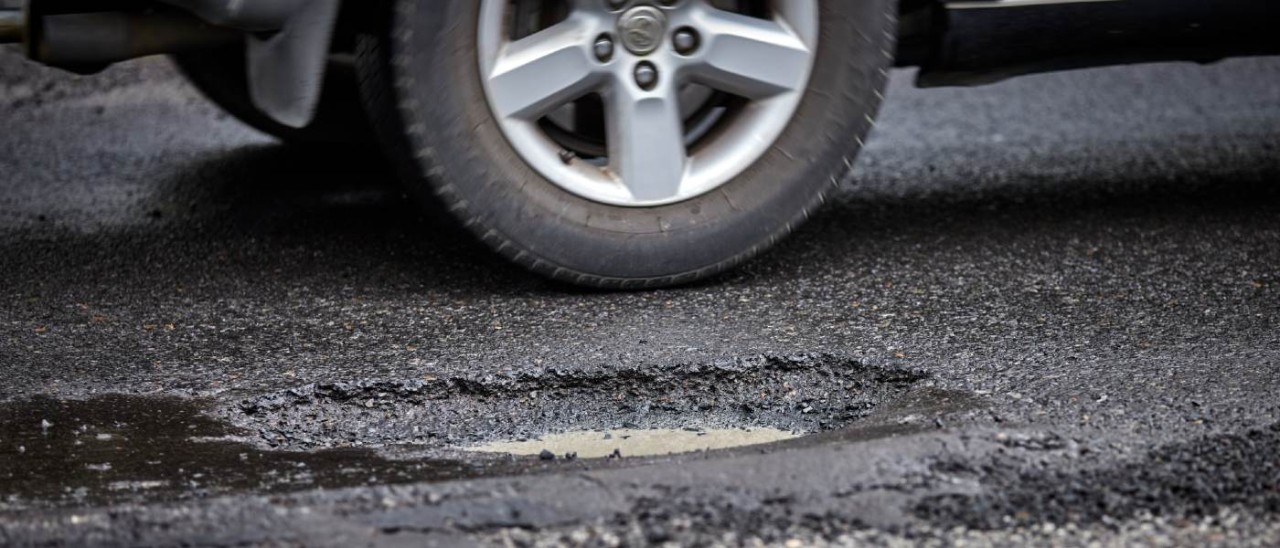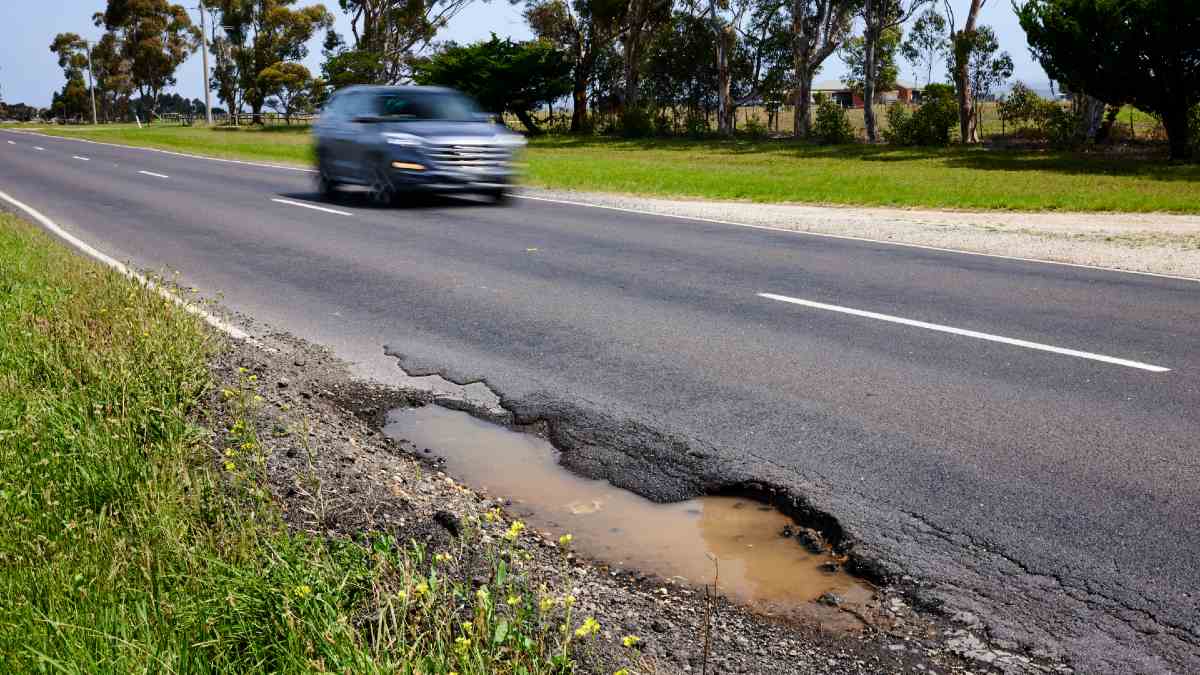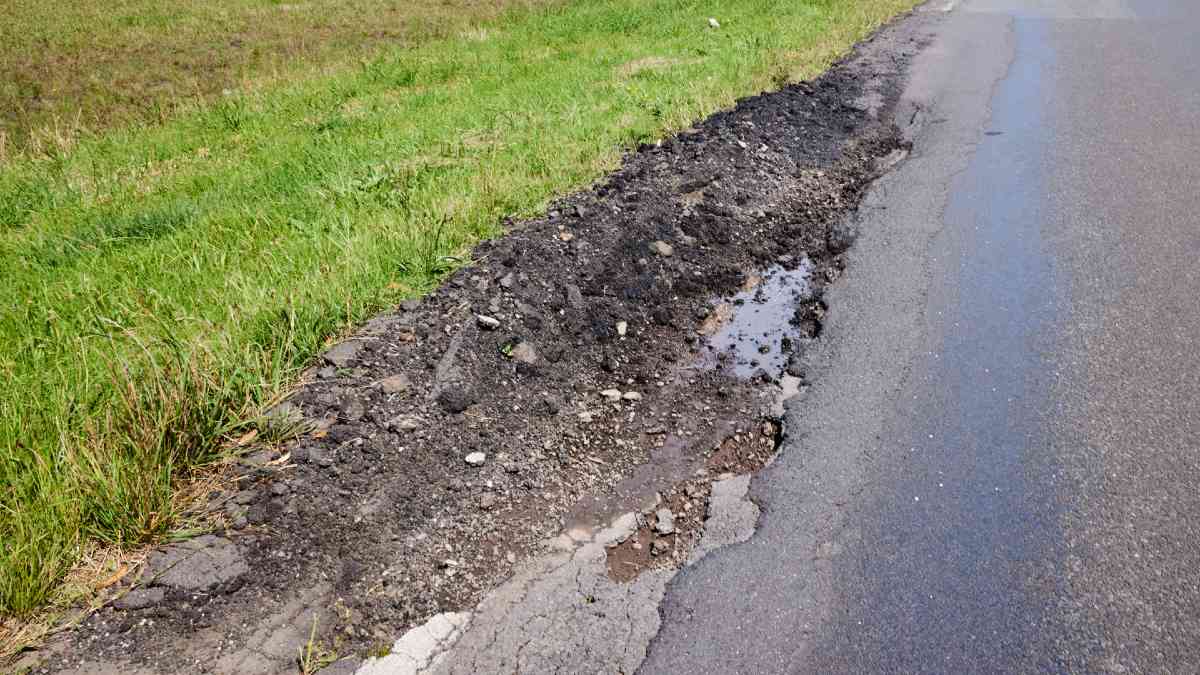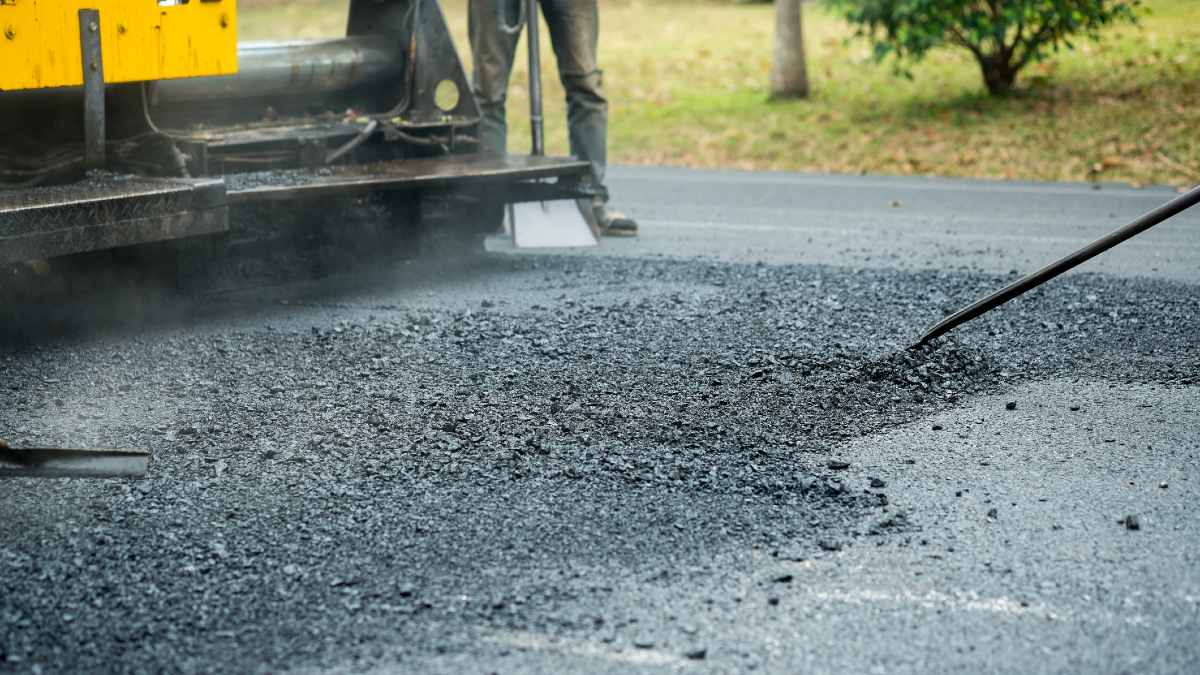Drink driving offenders now face new penalties. Here's what you need to know about the new drink driving laws in Victoria.
What causes potholes and how to avoid damage to your car

Potholes are a common driving hazard capable of damaging your vehicle. Knowing how to avoid potholes - and in the worst-case scenario safely drive over them – is a must for all motorists.
Potholes can be a big problem for drivers, with the potential to do serious and costly damage to your vehicle. Every time you drive there's a chance you'll encounter potholes, even small ones, particularly after heavy rain.
RACV's 2024 My Country Road survey shows that potholes and poor road condition are the biggest safety issue on regional roads across the state, with improving road surfaces a top priority. An overwhelming 64 per cent of survey participants identified potholes as the primary safety issue, up from 46 per cent in 2021.
For 2025, RACV is urging Victorians to participate in the My Melbourne Road survey, which aims to identify and prioritise the most dangerous intersections in Melbourne for government attention.

Country roads can be hazardous due to potholes and poor road conditions. Image: Matt Harvey
Guides to help you stay safe behind the wheel
What causes potholes?
Wet weather is the enemy when it comes to potholes, as demonstrated by the approximately 370,000 potholes that were patched in 2023, according to the Victorian Department of Transport and Planning. A further 211,000 potholes were fixed over the first 11 months of the 2024-25 financial year.
When water seeps into cracks in the road's surface it causes the surface to weaken and split. This process is exacerbated by the pressure of vehicles travelling over the road, eventually leading to chunks of the asphalt coming away entirely – resulting in a pothole.
Once the primary pothole has formed, they can easily grow in size and depth. Vehicles passing over the pothole can progressively erode more and more asphalt, while rain or flooding can wash away more road surface. In cold regions, the freezing - and the consequent expansion – of water in the asphalt can result in potholes, as can heavy vehicle traffic travelling over roads not designed for their weight class.
How potholes can damage your vehicle
Silvia Morris, RACV Drive School Driver Education and Development Manager, says motorists should not underestimate the damage that potholes can cause to a vehicle.
"Large potholes have the potential to cause severe damage to your tyres, wheels, suspension, exhaust and/or vehicle body, and in some cases can even lead to drivers losing control of their vehicle," she says. "Even small ones can cause wear and tear to your vehicle’s suspension and steering, which can be costly."
If you accidentally hit a pothole, it's a good idea to check your car for signs of damage. This includes sagging or bulging tyres, cracked or misshapen rims, and damage to the vehicle's body. Pay extra attention to how your car drives in the days following as well, keeping an eye out for signs like your steering pulling to one side, your wheel vibrating, or persistent new sounds.
Carrying a roadworthy spare tyre that's properly inflated means you’ve got a contingency plan if a pothole causes tyre issues. Get professional assistance to swap out your flat or damaged tyre with your roadworthy spare.
More: Tyre maintenance, roadworthy checks and when to replace them

You might notice more potholes after heavy rain, as water is their main cause. Image: Matt Harvey
Who is responsible for repairing potholes?
There isn't one entity responsible for the repair of potholes: it depends on the road. If you see a pothole, reporting it to the relevant authority is the best way to get it fixed.
In Victoria, VicRoads is responsible for potholes on arterial roads and freeways – this map shows you the organisation's jurisdiction.
Local councils are responsible for the non-arterial roads within their municipalities, while Parks Victoria and the Department of Land, Water and Planning manage the non-arterial state roads. Privately owned roads like the CityLink freeway are the responsibility of the controlling corporation.
How are potholes fixed?
Materials such as sand, gravel and crushed rocks are extracted from quarries around Victoria, which are then used to make asphalt. Potholes are fixed by filling in the hole with either cold mix or hot mix asphalt.
Hot mix is the more durable option, but unlike cold mix, it can only be applied when the ground is dry. This means that in prolonged periods of wet weather - during which potholes are more likely to form - the only option is to use cold mix asphalt. However, this asphalt wears down faster and is more akin to a band-aid solution until hot mix can be applied.
With the increase of potholes around the state, Resources Victoria data suggests the demand for material from quarries will increase from 63.7 million tonnes in 2020-2021 to 79.5 million tonnes by 2030. Due to this high demand, Victoria is exploring how quarry materials can be supplemented with recycled materials such as fabric, glass and construction demolition waste.

Hot mix asphalt is the most durable pothole fix, but cold mix can be an interim solution. Image: Getty
How to avoid potholes and drive safely
There are a few ways you can reduce your risk of hitting potholes. Avoidance is the best strategy, but do not suddenly brake or swerve, as these manoeuvres are dangerous.
How to drive safely over a pothole
Unfortunately, sometimes your only option is to hit the pothole, but you can minimise the damage. When you encounter a pothole, avoid sudden breaking and dangerous swerving into oncoming traffic.
"This is a very dangerous decision and could cause you to lose control of your vehicle or dangerously put you in the path of another vehicle," Morris says. "In these situations, a better decision would be to hit the pothole rather than risk hitting another vehicle or losing control of your vehicle."
When approaching an unavoidable pothole, keep a firm control of the steering wheel – which can be jolted with impact - and keep your wheels straight. Slow down, but release your brakes before impact.
"Applying the brakes at the time you hit the pothole can cause more damage," Morris says.
Keep your distance
"In good conditions, a three-second following distance is recommended, with an additional second added for every condition that reduces visibility or increases your risk of additional hazards (for example, rain, fog and darkness)," Morris says. “This can provide you with the additional time you need to recognise, react, and respond appropriately to potholes."
Stay alert
Always be mindful of where other drivers are on the road, as this will allow you to make safe decisions if you do spot an upcoming pothole. This is especially important on multi-lane roads where you might try to avoid a pothole by moving into another lane.
"If you are aware there is another driver approaching you, you will be unlikely to swerve into their lane, and you can plan a safer avoidance strategy," says Morris.
Hands on the wheel
"We often see people driving with one hand, or with their hands positioned lazily at the bottom of the steering wheel," Morris says. "These are dangerous habits; if the driver unexpectedly hits a pothole they are not in a position to readily take control of their vehicle."
Keep in mind that your hands should be positioned at 9 and 3 on the steering wheel because of the airbag location, not 10 and 2 as was previously taught.
Drive to conditions
Some road or driving conditions make it more likely that you'll encounter or hit a pothole. These include driving at night and driving on rough roads. Slow down to increase the amount of time you'll have to see and safely avoid a pothole.
"Also beware of driving through puddles," says Morris. "Some puddles can be hiding large potholes underneath them, so you should avoid driving over puddles where possible, and never drive through floodwaters."


